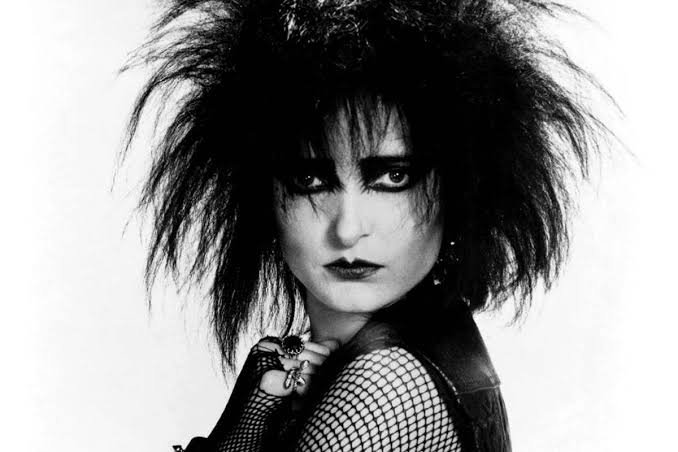Uncategorized
Just now; Researches on post-punk and the birth of goth rock genre

The Birth of Goth Rock: Post-Punk’s Darker Evolution
The origins of the goth rock genre are deeply entwined with the post-punk movement, which emerged in the late 1970s as a reaction to the perceived excesses and predictability of mainstream punk rock. While punk had heralded a raw, rebellious ethos, post-punk took this energy into more experimental, complex, and often darker territories, eventually giving birth to what would become known as goth rock. The development of goth rock was not a linear process but a confluence of various cultural, musical, and aesthetic factors that coalesced in the early 1980s.
#### Post-Punk Foundations: The Seeds of Goth Rock
The term “post-punk” refers to a diverse range of experimental rock music that emerged after the initial wave of punk. Influenced by the DIY ethos and anti-commercial sentiment of punk, post-punk artists sought to break free from conventional rock structures, often incorporating elements from avant-garde, electronic, and art rock, as well as a wider range of cultural and philosophical influences. Bands like **Joy Division**, **Siouxsie and the Banshees**, **The Cure**, and **Bauhaus** began to explore darker, more atmospheric sounds that laid the groundwork for goth rock.
One key feature of post-punk music was its atmospheric and introspective qualities. While punk was about aggression and protest, post-punk was often introspective, melancholy, and concerned with themes of alienation, despair, and the darker side of the human psyche. This shift in tone allowed for the emergence of goth rock, a genre that would later be defined by its unique blend of dark aesthetics, theatricality, and emotional depth.
The influence of **Krautrock** (German experimental rock bands like Can and Neu!) also played a role in shaping post-punk’s experimental sound. The minimalist rhythms and repetitive structures of these bands, combined with a desire to escape conventional Western rock forms, became central to the post-punk and gothic sensibilities. In parallel, the growing presence of electronic music in the late 1970s and early 1980s would become integral to goth rock’s evolving sound, offering new textures and possibilities for atmospheric mood-building.
#### Goth Rock: A Definable Genre
The term “gothic rock” (or goth rock) was first used to describe a distinct subset of post-punk bands that cultivated a darker, more dramatic aesthetic, both in their music and in their visual presentation. It was not merely the music itself that defined goth rock, but the overall atmosphere, the imagery, and the cultural associations with the genre.
**Bauhaus**, often credited as the progenitors of goth rock, released their seminal track **”Bela Lugosi’s Dead”** in 1979, which is widely regarded as the first goth rock anthem. The song, with its brooding bassline, sparse percussion, and eerie, drawn-out vocals from lead singer Peter Murphy, helped establish the haunting, cinematic quality that would come to define the genre. The track’s lyrics, referencing the legendary horror actor Bela Lugosi, epitomized goth rock’s love for the macabre, the surreal, and the decadent.
At the same time, **Siouxsie and the Banshees**, whose early work often blended post-punk’s angular guitars and rhythmic experimentation, also incorporated elements that would later be seen as essential to goth rock. Their 1980 album *Kaleidoscope* introduced a more atmospheric and darkly melodic sound, especially with tracks like “Spellbound” and “Christine,” which were both sonically and thematically aligned with the emerging goth sensibility.
**The Cure**, led by Robert Smith, played an essential role in refining the goth rock sound, especially with their 1982 album *Pornography*, which is often considered a pivotal moment in the genre’s development. The album’s introspective, gloomy themes and swirling, reverb-laden guitars became defining elements of goth rock, even though Smith would go on to explore more mainstream pop influences in later years.
#### Goth Aesthetics and Cultural Impact
Goth rock was not just a sound but an entire cultural phenomenon, marked by its distinctive aesthetic, fashion, and attitude. Musically, it drew from the dark, melancholy elements of post-punk but added a deeper focus on atmospheric, cinematic qualities. The genre was also defined by the theatricality of its performers, with bands like Bauhaus and Siouxsie and the Banshees adopting dramatic, often gothic-inspired looks—dark clothing, pale makeup, and androgynous styles—that mirrored the emotional intensity of their music.
The goth subculture, which emerged alongside the genre in the early 1980s, further cemented the connection between goth rock and a distinct lifestyle. Clubs like the **Batcave** in London became key sites for the scene, where fans of the music gathered in dark, intimate spaces to celebrate their shared love of gothic fashion, horror films, and melancholic art. It was here that the “goth” identity was fully formed—an outsider subculture that embraced the darker aspects of life, with a focus on individualism, introspection, and a sense of existential melancholy.
#### The Expansion and Legacy of Goth Rock
By the mid-1980s, goth rock had begun to evolve and expand beyond its post-punk roots. Bands like **Fields of the Nephilim**, **Sisters of Mercy**, and **Christian Death** developed a heavier, more atmospheric style that incorporated elements of industrial and even metal, creating a more expansive sound for the genre. The genre’s influence spread throughout the 1980s and 1990s, eventually inspiring the *darkwave* and *industrial* scenes of the 1990s, as well as influencing bands in the *alternative rock* and *metal* scenes.
Today, goth rock continues to influence a wide array of artists, from those in the post-punk revival movements to contemporary alternative and indie rock bands. Its influence can be heard in bands as diverse as **Placebo**, **The Editors**, and **Health**, all of whom have incorporated elements of goth rock’s signature gloom and atmosphere into their sound.
#### Conclusion
The birth of goth rock is deeply tied to the post-punk movement’s rejection of punk rock’s simplicity and its embrace of more complex, atmospheric, and often darker musical elements. With bands like Bauhaus, Siouxsie and the Banshees, and The Cure leading the way, goth rock emerged as a distinctive genre that combined brooding, melancholic music with a distinctive cultural aesthetic. Through its embrace of gothic imagery, introspective lyrics, and atmospheric soundscapes, goth rock not only carved out a new musical niche but also gave voice to a subculture that would endure for decades to come. Today, the legacy of goth rock remains, continuing to inspire new generations of listeners and musicians alike.
-

 AS Roma6 months ago
AS Roma6 months agoAffare fatto: la Roma acquista Federico Chiesa con una trattativa colossale.
-

 AS Roma8 months ago
AS Roma8 months agoRoma acquista Kalvin Phillips Il centrocampista del Manchester City
-

 Bayer04 Leverkusen8 months ago
Bayer04 Leverkusen8 months agoXabi Alonso sendet starke Botschaft an Bayer Leverkusen Fans
-

 Sevilla FC6 months ago
Sevilla FC6 months agoÚltimas noticias: La dirección del Sevilla transfiere el 75% de las acciones del club al multimillonario saudí para solucionar los problemas financieros.
-

 Real Betis7 months ago
Real Betis7 months agoEl Real Betis adquiere al mejor defensor de Valencia Cristhian Mosquera para fortalecer su defensa.
-

 AS Roma11 months ago
AS Roma11 months agoUltime notizie: la Roma in grossi guai mentre la UEFA ha risposto a Dybala che prendeva in giro Feyernood.
-

 Bayer04 Leverkusen11 months ago
Bayer04 Leverkusen11 months agoEilmeldung: „Xabi Alonso spricht im Medieninterview über seine Zukunft bei Bayer Leverkusen“
-

 AS Roma11 months ago
AS Roma11 months agoUltime notizie: la Roma è nei guai: João Pedro ha inviato un messaggio forte dopo il pareggio degli ottavi di finale di Europa.










